Final evidence Covid-19 is a ‘SimEx’ – planned simulation exercise by WHO and World Bank
It all comes round now… World leaders dealt above our heads, played their games and kept the plebs in the dark using smoke-screens of technocratic lingo. The elites are resetting our lives. All about The Great Reset. “This reset moment is an opportunity to accelerate and align our efforts to create truly global momentum” – Prince Charles.
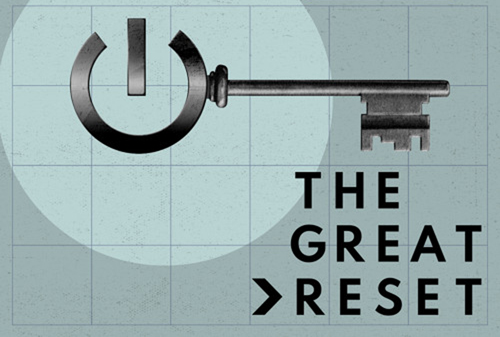
In 2005 – WHO member countries signed the new International Health Regulations (IHR) which is basically the implementation of the Health Management chapter in The Great Reset, the tactical manual for the New World Order aka “New Normal”. The document envisions using drills to perfect the new system.
(Document available here.)
In 2014 – The creation of the Global Health Security Agenda (GHSA), “a group of 69 countries, international organizations and non-government organizations, and private sector companies that have come together to achieve the vision of a world safe and secure from global health threats posed by infectious diseases”.
It was launched by a group of 44 countries and organizations including WHO, as a five-year multilateral effort with the purpose to accelerate the implementation of IHR, particularly in developing countries. In 2017, GHSA was expanded to include non-state actors. It was also extended through 2024 with the release of the Global Health Security Agenda (GHSA) 2024 Framework (called “GHSA 2024”). The latter has the purpose to reach a standardized level of capacity to combat infectious diseases.
In GHSA2024 Framework the “Target” of this Health Agenda is exposed: “By 2024, more than 100 countries that have completed an evaluation of health security capacity will have undergone planning and resource mobilization to address gaps, and will be in the process of implementing activities to achieve impact. These countries will strengthen their capacities and demonstrate improvements in at least five technical areas to a level of ‘Demonstrated Capacity’ or comparable level, as measured by relevant health security assessments, such as those conducted within the WHO IHR Monitoring and Evaluation Framework.”
In short, the implementation of another sort of dictatorship – the “health security”.
All financed through the World Bank, of course. Which is controlled by the Rothschild cartel.
Rothschilds patent the first Covid-19 test kit in the Netherlands. According to Dutch Government’s website for patent registrations: “A method is provided for acquiring and transmitting biometric data (e.g., vital signs) of a user, where the data is analyzed to determine whether the user is suffering from a viral infection, such as COVID-19. The method includes using a pulse oximeter to acquire at least pulse and blood oxygen saturation percentage, which is transmitted wirelessly to a smartphone. To ensure that the data is accurate, an accelerometer within the smartphone is used to measure movement of the smartphone and/or the user. Once accurate data is acquired, it is uploaded to the cloud (or host), where the data is used (alone or together with other vital signs) to determine whether the user is suffering from (or likely to suffer from) a viral infection, such as COVID-19. Depending on the specific requirements, the data, changes thereto, and/or the determination can be used to alert medical staff and take corresponding actions.”
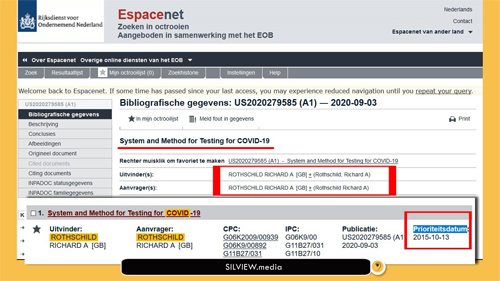
In 2017-2018 – World Bank’s website reports massive shipments of COVID-19 medical devices (tests, mainly).
In 2019 – In its first annual report, WHO and WB’s Global Preparedness Monitoring Board (GPMB) identifies the most urgent actions required to accelerate preparedness for health emergencies. This first report focuses on epidemics and pandemics.
The document is “co-convened by the World Health Organization and the World Bank Group”. Under “Progress indicator(s) by September 2020”, the report states:
“The United Nations (including WHO) conducts at least two system-wide training and simulation exercises, including one for covering the deliberate release of a lethal respiratory pathogen.
WHO develops intermediate triggers to mobilize national, international and multilateral action early in outbreaks, to complement existing mechanisms for later and more advanced stages of an outbreak under the IHR (2005).” – Global Preparedness Monitoring Board
Bellow we will expose short passages from this report, which had been entitled “A World at Risk” and had been issued in September 2019. What “risk” was in September 2019? These texts highlight that this report was written like a summary of guidelines to follow for the good implementation of the “Great Reset”.
“About GPMB
As an independent monitoring and advocacy body, the Global Preparedness Monitoring Board (hereafter referred to as the Board or GPMB) urges political action to prepare for and mitigate the effects of global health emergencies. Co-convened in May 2018 by the World Bank Group and the World Health Organization, the Board builds on the work of the Global Health Crises Task Force and Panel, created by the United Nations Secretary-General in the wake of the 2014-2016 Ebola epidemic.
The 15-member Board is made up of political leaders, heads of agencies, and experts, led jointly by Dr Gro Harlem Brundtland, formerly Prime Minister of Norway and Director-General of the World Health Organization and Mr Elhadj As Sy, Secretary General of the International Federation of Red Cross and Red Crescent Societies. Members serve on the Board in their individual capacities.”
“In this first annual report, the Board explores and identifies the most urgent needs and actions required to accelerate preparedness for health emergencies, focusing in particular on biological risks manifesting as epidemics and pandemics. (…)
The Board identified seven actions that leaders must implement to prepare for pressing threats. Some can – and should – be accomplished immediately whereas others are more long-term. (…)
Future reports will monitor progress on preparedness for other types of health emergencies, such as those caused by natural disasters.(…)”
At the end of the report introduction, titled “The world is at acute risk for devastating regional or global disease epidemics or pandemics that not only cause loss of life but upend economies and create social chaos”, there were underlined three points:
“The chances of a global pandemic are growing. While scientific and technological developments provide new tools that advance public health (including safely assessing medical countermeasures), they also allow for disease-causing microorganisms to be engineered or recreated in laboratories. A deliberate release would complicate outbreak response; in addition to the need to decide how to counter the pathogen, security measures would come into play limiting information-sharing and fomenting social divisions. Taken together, naturally occurring, accidental, or deliberate events caused by high-impact respiratory pathogens pose ‘global catastrophic biological risks.’
The world is not prepared for a fast-moving, virulent respiratory pathogen pandemic. The 1918 global influenza pandemic sickened one third of the world population and killed as many as 50 million people – 2.8% of the total population (16,17). If a similar contagion occurred today with a population four times larger and travel times anywhere in the world less than 36 hours, 50 – 80 million people could perish (18,19). In addition to tragic levels of mortality, such a pandemic could cause panic, destabilize national security and seriously impact the global economy and trade.
Trust in institutions is eroding
. Governments, scientists, the media, public health, health systems and health workers in many countries are facing a breakdown in public trust that is threatening their ability to function effectively. The situation is exacerbated by misinformation that can hinder disease control communicated quickly and widely via social media.”
No, they are not worried about misinformation. They are worried about their agenda being countered by truths leaking out on social media.
After the introduction, it is written with very BIG letters “ALL PARTS OF SOCIETY AND THE INTERNATIONAL COMMUNITY HAVE MADE PROGRESS IN PREPARING TO FACE HEALTH EMERGENCIES … BUT CURRENT EFFORTS REMAIN GROSSLY INSUFFICIENT.” We can understand now why a fake pandemic with real lockdowns and quarantines was implemented.
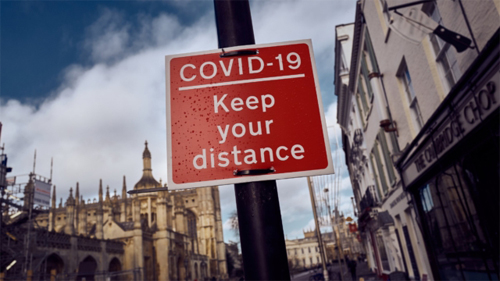
In the “Progress to Date” section, we find the following snippet (page 19): “In 2017 Germany, India, Japan, Norway, the Bill & Melinda Gates Foundation, the Welcome Trust and the World Economic Forum founded the Coalition for Epidemic Preparedness Innovations (CEPI) to facilitate focused support for vaccine development to combat major health epidemic/pandemic threats.”
Here are the “Seven urgent actions to prepare the world for health emergencies” written in this report:
“1. Heads of government must commit and invest.
2. Countries and regional organizations must lead by example.
3. All countries must build strong systems.
4. Countries, donors and multilateral institutions must be prepared for the worst.
5. Financing institutions must link preparedness with financial risk planning.
6. Development assistance funders must create incentives and increase funding for preparedness.
7. The United Nations must strengthen coordination mechanisms”.
“3. All countries must build strong systems.”
“Progress to date (September 2019):
At the global level, the new Health Emergencies Programme established at the World Health Organization (WHO) following the 2014-2016 Ebola crisis in west Africa enabled the organization to take on a stronger, more effective operational role in outbreaks. The reforms have already made a significant difference in emergency response worldwide.
There is increased awareness of the need for community involvement in all aspects of preparedness. Recent outbreaks of Ebola and Zika, and other diseases saw calls for an increase in community engagement in view of its high effectiveness.” (…)
On page 25, they are worried about armed resistance to their imposition of vaccines, at “Persistent challenges and obstacles” section at this action. To quote, “Breakdown of trust and social cohesion:Challenges to poliomyelitis (polio) eradication efforts in Afghanistan and Pakistan and those experienced while containing the tenth Ebola outbreak in the DRC vividly demonstrate the impact that a breakdown in citizens’ trust and social cohesion can have on health emergency response. Consequences include attacks on both national and international health-care workers and delays or stoppages in response efforts. In some countries, waning trust in public health and government officials together with cultural and religious beliefs lead to is decreasing vaccination rates and leading to the re-emergence of measles and other vaccine-preventable diseases, a phenomenon found in communities at all economic and educational levels.”
“4. Countries, donors and multilateral institutions must be prepared for the worst
A rapidly spreading pandemic due to a lethal respiratory pathogen (whether naturally emergent or accidentally or deliberately released) poses additional preparedness requirements. Donors and multilateral institutions must ensure adequate investment in developing innovative vaccines and therapeutics, surge manufacturing capacity, broad-spectrum antivirals and appropriate non-pharmaceutical interventions. All countries must develop a system for immediately sharing genome sequences of any new pathogen for public health purposes along with the means to share limited medical countermeasures across countries.”
“Ultimate objectives: The tools and systems needed to respond effectively to a fast-moving and lethal respiratory pathogen are in place”
“5. Financing institutions must link preparedness with financial risk planning.”
At page 34 proposes making “emergency preparedness” a precondition for receiving loans and financial support from the IMF and the World Bank. To quote, “To mitigate the severe economic impacts of a national, regional epidemic and/or a global pandemic, the IMF and the World Bank must urgently renew their efforts to integrate preparedness into economic risk and institutional assessments, such as the IMF’s next cycle of Article IV consultations with countries, and the World Bank’s next Systematic Country Diagnostics for IDA credits and grants. The funding replenishments of the IDA, Global Fund to Fight AIDS, TB and Malaria, the and Gavi Alliance should include explicit commitments regarding preparedness.”
Now here are the wonderful people who are members of the Global Preparedness Monitoring Board. Remember Fauci? Remember the Bill Gates Foundation? Other notables include a member of the Communist Party of China.
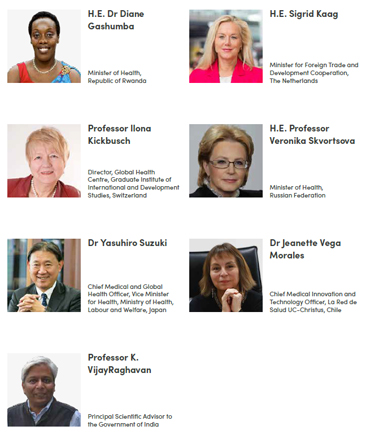
“7. The United Nations must strengthen coordination mechanisms.
The Secretary General of the United Nations, with WHO and United Nations Office for the Coordination of Humanitarian Affairs (OCHA), must strengthen coordination in different country, health and humanitarian emergency contexts, by ensuring clear United Nations systemwide roles and responsibilities; rapidly resetting preparedness and response strategies during health emergencies; and, enhancing United Nations system leadership for preparedness, including through routine simulation exercises. WHO should introduce an approach to mobilize the wider national, regional and international community at earlier stages of an outbreak, prior to a declaration of an IHR (2005) Public Health Emergency of International Concern.
Progress indicator(s) by September 2020:
-The Secretary-General of the United Nations, with the Director-General of WHO and Under-Secretary-General for Humanitarian Affairs strengthens coordination and identifies clear roles and responsibilities and timely triggers for a coordinated United Nations system-wide response for health emergencies in different countries and different health and humanitarian emergency contexts.
– The United Nations (including WHO) conducts at least two system-wide training and simulation exercises, including one for covering the deliberate release of a lethal respiratory pathogen.
– WHO develops intermediate triggers to mobilize national, international and multilateral action early in outbreaks, to complement existing mechanisms for later and more advanced stages of an outbreak under the IHR (2005).
– The Secretary General of the United Nations convenes a high-level dialogue with health, security and foreign affairs officials to determine how the world can address the threat of a lethal respiratory pathogen pandemic, as well as for managing preparedness for disease outbreaks in complex, insecure contexts.
Ultimate objectives:
There is no ambiguity or delay in the United Nations system-wide response to a global health emergency. There are clear rules, roles and responsibilities, along with a designated leader, empowered with the authority to coordinate across the system and experienced in leading a global response through regular simulations or actual events. WHO can rapidly mobilize countries and partners early in an outbreak or health emergency.”
More info and resources
WHO elaborates on what a SimEx is in October 2019: “Simulation exercises have been identified as a key voluntary instrument in the validation of core capacities under the ‘Implementation of the International Health Regulations: Draft 5-year draft global strategic plan to improve public health preparedness and response’, which was adopted by the seventy first World Health Assembly. Simulation exercises, along with After Action Reviews, represent the functional assessment of capacities and complement States Parties annual reporting, independent reviews, and joint external evaluations. They play a key role in identifying the strengths and gaps in the development and implementation of IHR capacities and to support countries to assess the operational capability of their national capacity for public health preparedness and response.” – WHO.
Full-scale/field exercises (FSX): “A full-scale exercise simulates a real event as closely as possible and is designed to evaluate the operational capability of emergency management systems in a highly stressful environment, simulating actual response conditions. This includes the mobilization and movement of emergency personnel, equipment and resources. Ideally, the full-scale exercise should test and evaluate most functions of the emergency management plan or operational plan. Differing from the FX, a full-scale exercise typically involves multiple agencies and participants physically deployed in an exercise field location.” – WHO.
Field exercises: “See full-scale exercise. A field exercise is one form of full-scale exercise, focusing on more specific capacities or series of capacities, such as procedures for Rapid Response Teams (RRT), laboratory analysis or other sample collection and transport.”– WHO.
“Exercises are not one-time events, but should be undertaken as part of a carefully designed exercise program which ensures a common strategic objective is addressed. A comprehensive exercise program is made up of progressively complex exercises, which build upon the previous, until they are as close to reality as possible. This ‘building-block approach’ should start with basic exercises that test specific aspects of preparedness and response, followed by progressively complex exercises requiring additional preparation time and resources”. – WHO.
The figure below provides an illustration of the level of preparation and capacity needed for each exercise type.
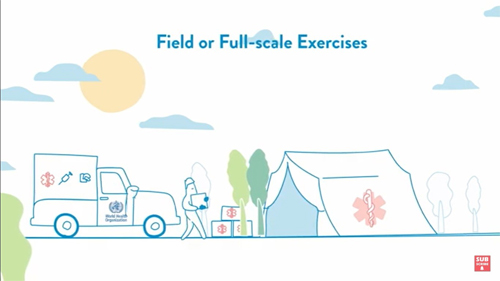
Situation map as of September 10, 2020. US, Brazil, Australia, Scandinavia and other countries seem to conduct their own drills following a different agenda, and that matches the actual field situation.
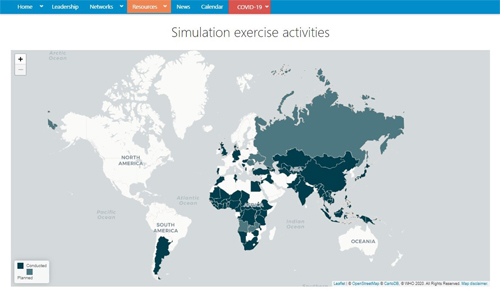
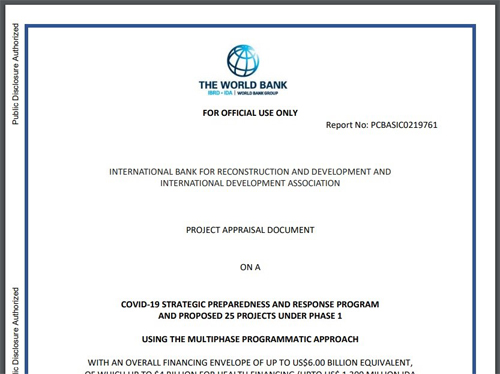
You can read more on this subject here.
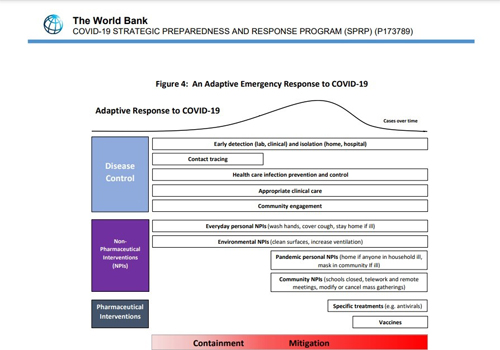
Ever heard of “Event 201”, the “Crimson Contagion”, “Clade X“, “Dark Winter“, or “Atlantic Storm“? While Covid-19 is the largest so far, these simulations have a long history.
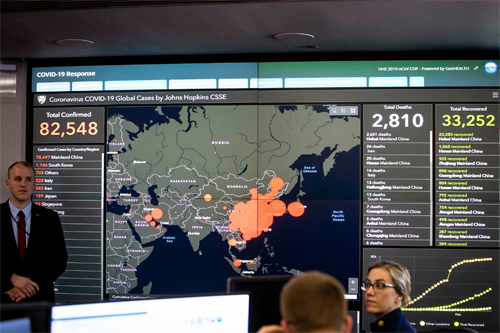
The photo above represents “The Department of Health and Human Services’ Covid-19 operations center in Washington. The department ran an extensive exercise last year simulating a pandemic” wrote NY Times.
“The exercise played out in four separate stages, starting in January 2019. The events were supposedly unspooling in real time – with the worst-case scenario underway as of Aug. 13, 2019 – when, according to the script, 12,100 cases had already been reported in the United States, with the largest number in Chicago, which had 1,400.
The fictional outbreak involved a pandemic flu, which the Department of Health and Human Services says was ‘very different than the novel coronavirus.’ The staged outbreak had started when a group of 35 tourists visiting China were infected and then flew home to Australia, Kuwait, Malaysia, Thailand, Britain and Spain, as well as to the United States, with some developing respiratory symptoms and fevers en route.
A 52-year-old man from Chicago, who was on the tour, had ‘low energy and a dry cough’ upon his return home. His 17-year-old son on that same day went out to a large public event in Chicago, and the chain of illnesses in the United States started.
Many of the moments during the tabletop exercise are now chillingly familiar.
In the fictional pandemic, as the virus spread quickly across the United States, the C.D.C. issued guidelines for social distancing, and many employees were told to work from home.” (NY Times)
About the Event 201 exercise
According to their own website:
“Event 201 was a 3.5-hour pandemic tabletop exercise that simulated a series of dramatic, scenario-based facilitated discussions, confronting difficult, true-to-life dilemmas associated with response to a hypothetical, but scientifically plausible, pandemic. 15 global business, government, and public health leaders were players in the simulation exercise that highlighted unresolved real-world policy and economic issues that could be solved with sufficient political will, financial investment, and attention now and in the future.
The exercise consisted of pre-recorded news broadcasts, live ‘staff’ briefings, and moderated discussions on specific topics. These issues were carefully designed in a compelling narrative that educated the participants and the audience.
The Johns Hopkins Center for Health Security, World Economic Forum, and Bill & Melinda Gates Foundation jointly propose these recommendations.
Purpose
In recent years, the world has seen a growing number of epidemic events, amounting to approximately 200 events annually. These events are increasing, and they are disruptive to health, economies, and society. Managing these events already strains global capacity, even absent a pandemic threat. Experts agree that it is only a matter of time before one of these epidemics becomes global – a pandemic with potentially catastrophic consequences. A severe pandemic, which becomes ‘Event 201,’ would require reliable cooperation among several industries, national governments, and key international institutions.
Recent economic studies show that pandemics will be the cause of an average annual economic loss of 0.7% of global GDP—or $570 billion. The players’ responses to the scenario illuminated the need for cooperation among industry, national governments, key international institutions, and civil society, to avoid the catastrophic consequences that could arise from a large-scale pandemic.
Similar to the Center’s 3 previous exercises – Clade X, Dark Winter, and Atlantic Storm – Event 201 aimed to educate senior leaders at the highest level of US and international governments and leaders in global industries.
It is also a tool to inform members of the policy and preparedness communities and the general public. This is distinct from many other forms of simulation exercises that test protocols or technical policies of a specific organization. Exercises similar to Event 201 are a particularly effective way to help policymakers gain a fuller understanding of the urgent challenges they could face in a dynamic, real-world crisis.
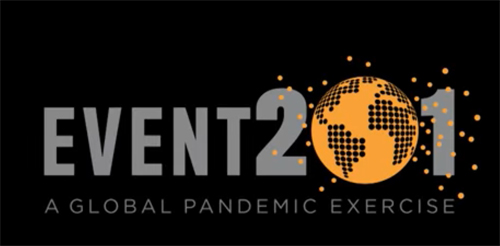
Scenario
Details about the scenario are available here.
Recommendations
The next severe pandemic will not only cause great illness and loss of life but could also trigger major cascading economic and societal consequences that could contribute greatly to global impact and suffering. The Event 201 pandemic exercise, conducted on October 18, 2019, vividly demonstrated a number of these important gaps in pandemic preparedness as well as some of the elements of the solutions between the public and private sectors that will be needed to fill them. The Johns Hopkins Center for Health Security, World Economic Forum, and Bill & Melinda Gates Foundation jointly propose these recommendations.”
Audience
An invitation-only audience of nearly 130 people attended the exercises, and a livestream of the event was available to everyone. Video coverage is available here.
Exercise team
Eric Toner, MD, is the exercise team lead from the Johns Hopkins Center for Health Security. Crystal Watson, Dr. PH, MPH and Tara Kirk Sell, PhD, MA are co-leads from the Johns Hopkins Center for Health Security. Ryan Morhard, JD, is the exercise lead from the
World Economic Forum
, and Jeffrey French is the exercise lead for the
Bill and Melinda Gates Foundation
.
Main organisers: The Johns Hopkins Center for Health Security, World Economic Forum, and Bill & Melinda Gates.”
World Economic Forum is the ideologist that redacted The Great Reset. In order to create momentum for the Great Reset, UK royal Prince Charles said the imagination and will of humanity “will need to be captured” so that they can set the world on a new trajectory. This is taken from his historical but largely ignored speech at the official launch event for The Great Reset. He further suggested that longstanding incentive structures that have adverse effects on the environments must be reorientated, and that systems and pathways will need to be redesigned to advance net zero emissions globally. “This reset moment is an opportunity to accelerate and align our efforts to create truly global momentum. Countries, industries and businesses moving together can create efficiencies and economies of scale that will allow us to leapfrog our collective progress and accelerate our transition,” the Prince said.
You may also read about the spectacular Clade X, Dark Winter, and Atlantic Storm.
yogaesoteric
February 19, 2021
